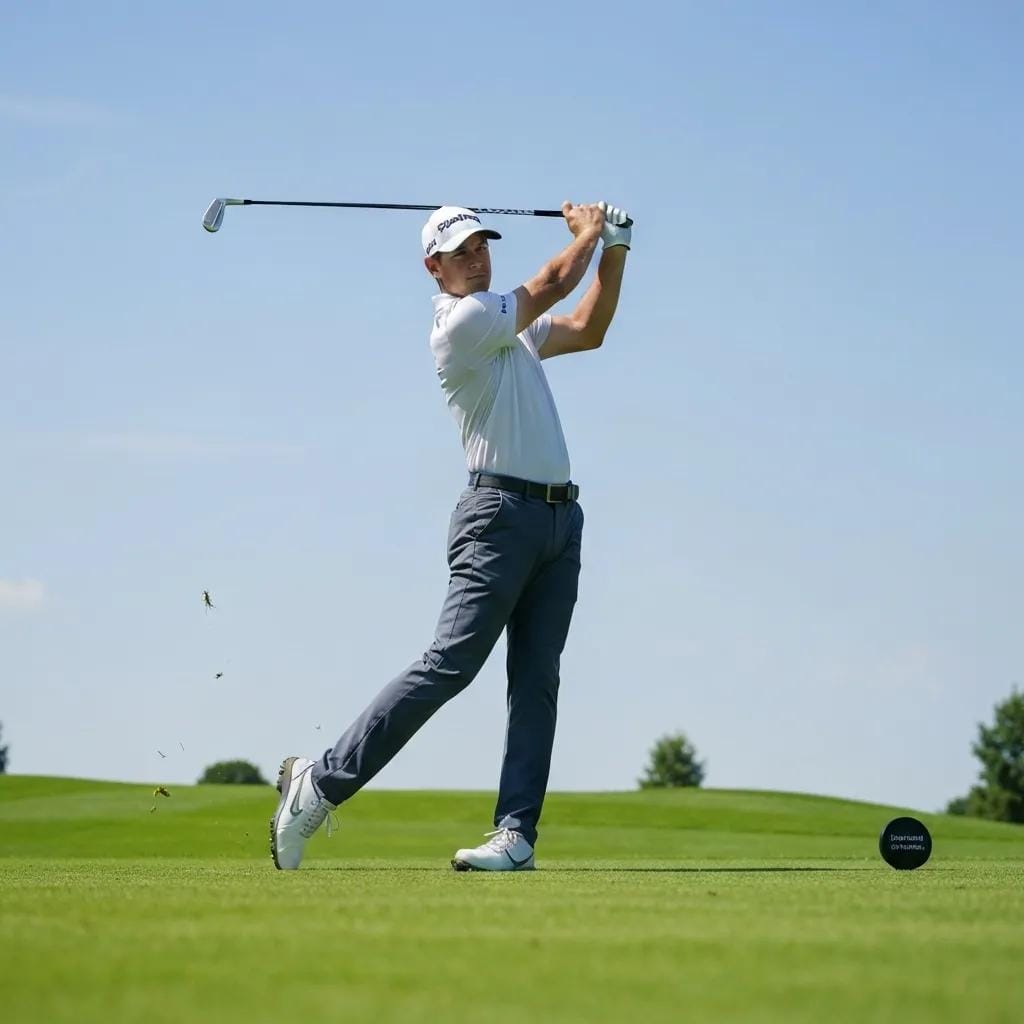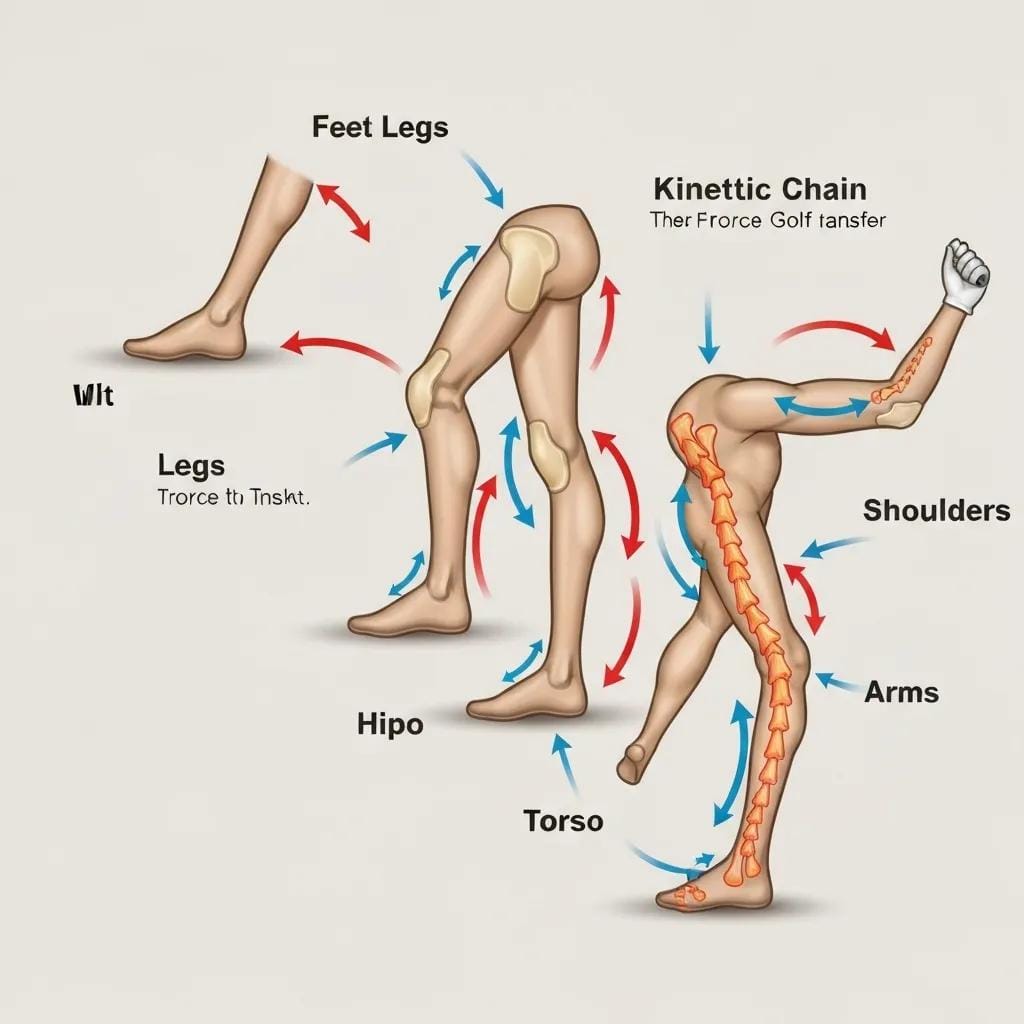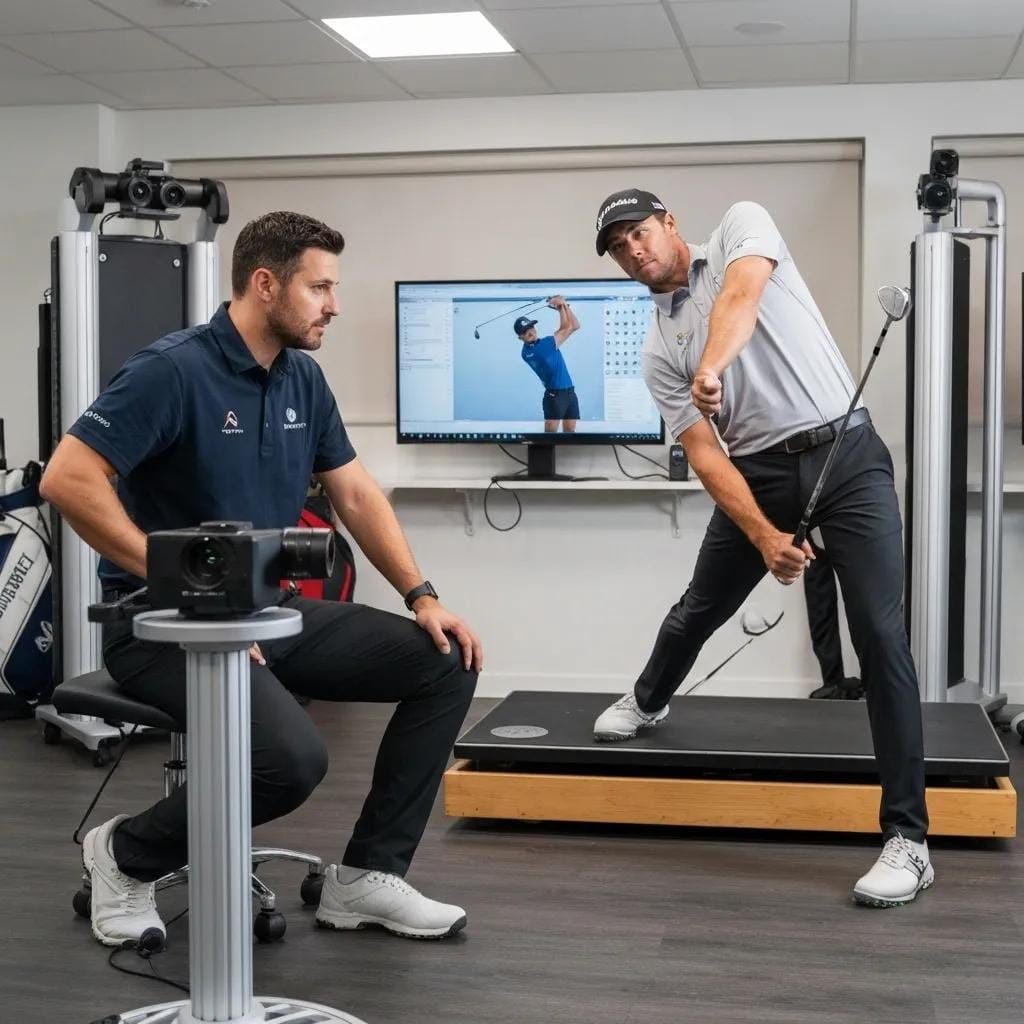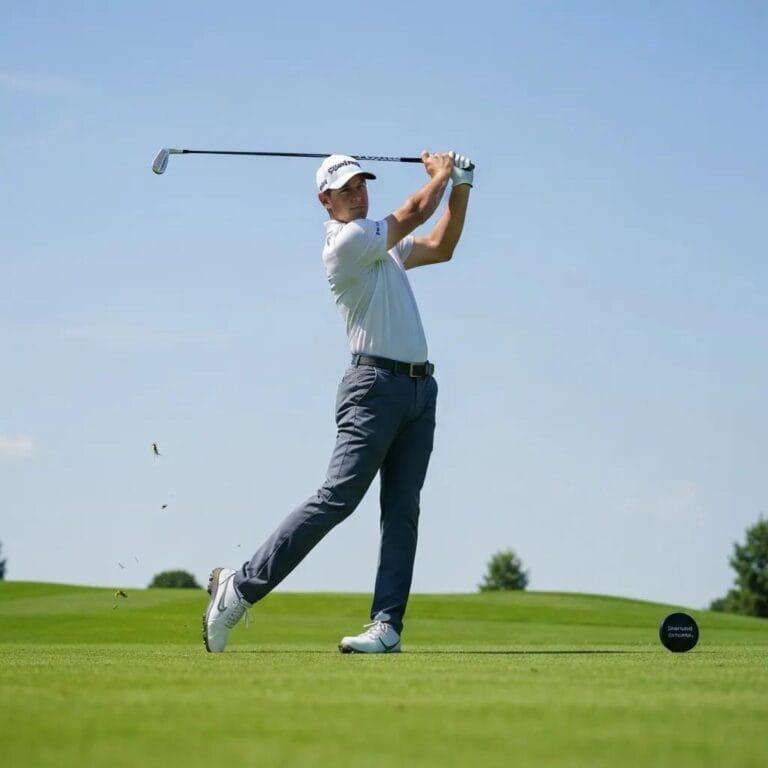
Golf Swing Biomechanics Assessment Explained: Optimize Your Swing and Prevent Injuries
Efficient golf swing mechanics can reduce lower back injury rates—reported in 15–50 percent of golfers—while boosting clubhead speed and consistency. In this article, you’ll discover how a golf swing biomechanics assessment identifies physical limitations, clarifies the Titleist Performance Institute (TPI) evaluation process, prevents common injuries, and guides customized rehabilitation and fitness programs. You’ll learn the kinetic chain fundamentals, explore movement screens, see which corrective exercises enhance mobility and stability, and find out who benefits most—from juniors to seniors—and how to schedule your assessment at Restorative Health and Wellness in Indianapolis. By understanding these key themes, you’ll gain actionable insights to improve performance and support long-term wellness through targeted physical therapy and golf fitness services.
Biomechanical parameters of the golf swing associated with lower back pain: A systematic review
This systematic review highlights that low back pain (LBP) is the most common injury among golfers of all skill levels. It investigates various human golf swing biomechanics potentially linked to LBP, such as reduced lumbar flexion velocity or increased lumbar lateral flexion velocity. The review emphasizes that while some associations exist, the evidence is often limited and conflicting, underscoring the need for more robust prospective studies to fully understand the relationship between golf swing biomechanics and LBP.
This research directly supports the article’s claim that efficient golf swing mechanics can reduce lower back injury rates and that biomechanics assessment is crucial for preventing common golf injuries, particularly lower back pain.
What Is Golf Swing Biomechanics and Why Does It Matter?
Golf swing biomechanics assessment evaluates how your body segments—feet, legs, hips, torso, arms, and club—work together to generate power, accuracy, and injury resilience. By analyzing joint angles, muscle activation, and movement sequencing, this approach pinpoints inefficiencies and supports performance gains up to 12 percent in clubhead speed. Understanding these relationships lays the foundation for improving swing mechanics and minimizing stress on vulnerable tissues.
How Does Biomechanics Influence Golf Swing Performance?
A precise biomechanical analysis links body movements to swing outcomes through energy transfer and timing.
Before examining specific metrics, consider three primary influences of biomechanics on swing performance:
- Kinetic Chain Efficiency – Coordinated segmental rotations transmit ground force from feet through hips, torso, and arms to clubhead speed.
- Mobility–Stability Balance – Adequate joint range of motion combined with muscular control enhances swing arc and prevents compensation patterns.
- Force Application Timing – Proper sequencing of muscle contractions maximizes acceleration during transition and downswing.
Efficient mechanics optimize power delivery and consistency, guiding corrective strategies in subsequent assessment phases.
What Are the Key Components of the Golf Swing Kinetic Chain?

The kinetic chain comprises interdependent body segments, each contributing to force generation and transfer. Understanding these parts clarifies why certain restrictions reduce power or increase injury risk.
| Segment | Primary Role | Impact on Swing |
|---|---|---|
| Feet & Ankles | Ground contact & balance | Foundation for hip rotation |
| Legs & Knees | Force absorption & initial thrust | Drives pelvis rotation |
| Hips & Pelvis | Rotary power generation | Transmits energy to torso |
| Torso & Spine | Trunk rotation & stability | Controls club path and timing |
| Shoulders & Arms | Club acceleration and release | Generates clubhead speed and accuracy |
| Club & Grip | Final energy delivery | Determines ball trajectory at impact |
This breakdown highlights how each section builds on the previous one, guiding us to identify specific limitations in movement screens.
Why Is Understanding Physical Limitations Crucial for Golfers?
Identifying range-of-motion restrictions, muscle imbalances, and stability deficits prevents compensatory swing patterns that cause pain or inconsistency. For example, limited hip rotation forces the lower back into excessive extension, increasing stress and leading to chronic pain. Recognizing these constraints early enables targeted interventions that restore functional movement and underpins a safer, more powerful swing.
What Is a TPI Golf Performance Assessment and How Does It Work?
A TPI Golf Performance Assessment is a structured movement analysis developed by the Titleist Performance Institute that evaluates mobility, stability, and strength in relation to golf swing mechanics. It reveals physical constraints that influence clubhead speed, swing plane, and injury risk while guiding a personalized improvement plan. This comprehensive evaluation combines movement screens, biomechanical testing, and video analysis to deliver actionable insights.
What Movement Screens and Physical Evaluations Are Included in a TPI Assessment?
The TPI assessment uses validated screens to examine key physical attributes affecting swing mechanics. These screens include:
- Overhead Deep Squat to assess overall mobility and core stability.
- Single-Leg Balance to test lower limb stability and control.
- Seated Rotation to evaluate thoracic spine flexibility.
- Hip Rotation Bench Test to measure internal and external hip mobility.
- Core Stability Press to gauge trunk control under load.
Correlation of Titleist Performance Institute (TPI) level 1 movement screens and golf swing faults
This study examined the relationship between Titleist Performance Institute (TPI) Level 1 movement screen variables and 14 common golf swing faults. It found significant associations between specific physical limitations, such as an inability to perform a toe touch or single-leg balance, and golf swing faults like early hip extension, loss of posture, or slide during the swing. The findings suggest that addressing a golfer’s core strength, balance, and hamstring flexibility can help avoid these common swing faults.
This study provides evidence for the effectiveness of the TPI Golf Performance Assessment in identifying physical constraints that influence swing mechanics and injury risk, directly supporting the article’s explanation of how TPI assessments work.
How Does the TPI Assessment Identify Swing Faults and Injury Risks?
By correlating movement screen results with swing video analysis, the assessment isolates physical causes of common swing faults such as early extension, over-rotation, or reverse spine angle. A scoring system flags areas where poor mobility, insufficient stability, or strength imbalances increase injury susceptibility—especially in the lower back, elbow, wrist, and shoulder—enabling proactive risk management.
What Should Golfers Expect During a TPI Golf Fitness Evaluation?
During a TPI golf fitness evaluation, you will:
- Complete a health history and performance goals interview.
- Perform a series of movement screens and strength tests guided by a certified professional.
- Undergo video capture of your swing from multiple angles.
- Receive a detailed report linking physical findings to swing faults and injury factors.
- Discuss personalized recommendations, including corrective exercises, fitness drills, and rehabilitation strategies.
How Can Golf Biomechanics Assessment Prevent Common Golf Injuries?

A focused biomechanics assessment identifies movement patterns that create excessive joint stress and tissue overload. Addressing these issues through targeted interventions reduces the incidence of lower back pain, golfer’s elbow, and wrist or shoulder injuries by promoting balanced loading and efficient mechanics.
What Are the Most Common Golf Injuries Related to Swing Mechanics?
Before reviewing prevention approaches, here is an overview of injury prevalence and mechanisms:
| Injury | Cause | Typical Symptom |
|---|---|---|
| Lower Back Pain | Repetitive extension and rotation | Chronic lumbar stiffness or ache |
| Golfer’s Elbow | Excessive forearm muscle tension | Medial elbow tenderness |
| Wrist Tendinopathy | Improper wrist hinge or impact forces | Pain at the base of the thumb |
| Shoulder Impingement | Insufficient scapular stability | Pain during follow-through |
| Hip Flexor Strain | Limited hip rotation and force transfer | Groin or hip front discomfort |
How Does Improper Swing Biomechanics Cause Injury?
When segments in the kinetic chain fail to contribute appropriately, other areas compensate, leading to overload. For instance, limited thoracic rotation shifts rotational demand to the lumbar spine, causing micro-trauma over repeated swings. Similarly, weak glute activation forces the lower back into hyperextension, increasing disc pressure and pain. Correcting sequence breakdowns restores balanced loading and injury resilience.
What Rehabilitation Strategies Support Injury Recovery and Prevention?
Effective recovery plans combine mobility drills, stability training, and functional integration to rebuild efficient mechanics. Key strategies include:
- Spinal Mobilization Exercises targeting thoracic extension to reduce lumbar strain.
- Hip Stability Drills such as clamshells and single-leg Romanian deadlifts to reinforce glute activation.
- Rotational Core Strengthening with cable chops and anti-rotation presses to enhance trunk stability.
- Scapular Control Work including banded scapular retractions for shoulder health.
- Progressive Swing Drills integrating corrected movement patterns into golf-specific exercises.
How Does Customized Golf Fitness and Rehabilitation Improve Swing Mechanics?
Personalized golf fitness and rehabilitation programs translate assessment findings into targeted interventions that enhance mobility, strength, and stability. By aligning physical capabilities with swing demands, these programs accelerate performance gains and support sustainable wellness.
What Corrective Exercises Target Mobility, Strength, and Stability?
Below is a selection of exercises matched to common assessment findings:
| Exercise | Target Attribute | Immediate Benefit |
|---|---|---|
| Thoracic Rotation Stretch | Spinal Mobility | Improves turn range and reduces lumbar stress |
| Single-Leg Deadlift | Hip Stability | Enhances glute activation and balance |
| Pallof Press | Core Anti-Rotation | Strengthens trunk and protects lower back |
| Banded Shoulder Retraction | Scapular Control | Promotes proper shoulder mechanics and follow-through |
| Medicine Ball Rotational Throw | Dynamic Power | Reinforces coordinated force transfer in the swing |
How Are Rehabilitation Programs Tailored to Individual Golfers?
Each rehabilitation plan at Restorative Health and Wellness integrates personal medical history, swing analysis results, and athletic goals to create a progressive roadmap. Frequency, intensity, and exercise selection adapt to skill level, age, and physical findings—ensuring safe progression from basic mobility to advanced power drills.
How Does Physical Therapy Integrate with Golf Performance Training?
Physical therapy specialists collaborate with golf fitness professionals to merge corrective exercises and swing technique work. Manual therapies restore joint function and reduce pain, while integrated drills reinforce proper mechanics. This holistic approach ensures that rehabilitated movement patterns become ingrained within performance training, leading to lasting improvements on the range and course.
Who Benefits Most from Golf Swing Biomechanics Assessments?
Golf swing biomechanics assessments serve a wide audience—from junior players learning proper mechanics to seniors preserving mobility—and cater to amateurs seeking consistency and professionals chasing peak performance. By addressing individual needs, these evaluations maximize benefits for every golfer.
What Are the Unique Biomechanical Needs of Junior and Senior Golfers?
Junior golfers typically require:
- Fundamental Movement Training to establish balanced swing patterns.
- Flexibility Work for growing joints and developing motor control.
Senior golfers often benefit from:
- Joint Preservation Strategies to maintain range and reduce degeneration.
- Strength-Endurance Programs targeting core and hip musculature for stability.
How Do Amateur and Professional Golfers Improve Through Biomechanical Training?
Both amateurs and professionals see improvements when biomechanics assessments inform training:
- Amateurs gain consistency and pain relief by correcting basic movement faults.
- Professionals refine energy transfer and fine-tune sequencing to add distance and accuracy.
Why Should Injured Golfers Seek Biomechanics Assessments for Recovery?
Injured golfers benefit from a biomechanics assessment by:
- Pinpointing root mechanical causes of pain.
- Guiding precise rehabilitation that restores function.
- Reinforcing safe movement patterns to prevent recurrence.
What Are the Key Biomechanical Concepts Every Golfer Should Know?
Fundamental biomechanical concepts—kinetic chain, ground reaction forces, and the X-factor—underpin efficient swing mechanics. Grasping these ideas empowers golfers to practice with purpose and integrate corrective strategies effectively.
What Is the Role of the Kinetic Chain in Power Generation?
The kinetic chain describes how sequential body segment rotations and stabilizations generate and transfer force from the ground to the club. Efficient chain function ensures maximal clubhead velocity by linking feet, legs, hips, torso, and arms into a coordinated energy system, reducing wasted movement and injury risk.
How Do Ground Reaction Forces Affect Swing Efficiency?
Ground reaction forces (GRFs) are the equal and opposite forces exerted by the ground on the body during weight shift and drive phases. Proper foot mechanics and lower-body drive maximize GRFs, which are then transmitted upward. When GRFs are under-utilized, golfers rely excessively on upper-body muscles, limiting power and increasing strain on joints.
What Is the X-Factor and How Does It Influence Swing Mechanics?
The X-factor refers to the separation angle between shoulder turn and hip rotation at the top of the backswing. A larger X-factor increases stored elastic energy in the torso, boosting rotational power during downswing. Balancing this rotational stretch with adequate stability prevents overextension and optimizes clubhead speed.
How Can Golfers Schedule and Prepare for a Biomechanics Assessment at Restorative Health and Wellness?
Scheduling a golf swing biomechanics assessment involves a streamlined process at Restorative Health and Wellness in Indianapolis, designed to integrate seamlessly into your training and recovery routine. By preparing key information and following simple steps, you’ll ensure a productive evaluation that lays the groundwork for improved performance.
What Is the Appointment Process for a Golf Swing Biomechanics Assessment?
- Call or submit an inquiry to request available evaluation slots.
- Complete a brief health and performance intake form electronically.
- Arrive 10 minutes early for a pre-assessment consultation.
- Undergo movement screens, strength tests, and video swing capture.
- Discuss results and receive a personalized plan summary.
How Does Restorative Health and Wellness Support Long-Term Golf Performance?
Through integrated services—including physical therapy, corrective exercises, and ongoing fitness coaching—Restorative Health and Wellness supports sustained improvements in swing mechanics, injury prevention, and overall wellness. Regular follow-up sessions maintain movement quality and adapt programs as goals evolve, fostering continuous progress on and off the course.
Where Is the Golf Performance Assessment Service Located in Indianapolis?
The golf swing biomechanics assessment is offered at our Indianapolis clinic, conveniently situated near Meridian-Kessler. Our facility features specialized equipment—force plates, 3D motion capture, and video analysis stations—in a comfortable environment dedicated to optimizing golf performance and rehabilitation for local players.
Improving your swing through a biomechanics assessment paves the way for enhanced power, precision, and pain-free play. By partnering with Restorative Health and Wellness, you gain expert guidance, personalized programming, and a supportive path toward lasting golf performance and well-being. Schedule your evaluation today to take the first step toward a more efficient, healthier swing.
Frequently Asked Questions
What are the benefits of a golf swing biomechanics assessment for beginners?
A golf swing biomechanics assessment is particularly beneficial for beginners as it helps establish a solid foundation for proper swing mechanics. By identifying physical limitations and movement inefficiencies early on, beginners can develop balanced swing patterns and avoid bad habits that may lead to injuries. The assessment provides personalized feedback and corrective exercises tailored to their unique needs, promoting a more effective learning process and enhancing overall performance from the start.
How often should golfers undergo a biomechanics assessment?
The frequency of golf swing biomechanics assessments can vary based on individual needs and goals. Generally, it is recommended that golfers undergo an assessment at least once a year to monitor progress and address any emerging physical limitations. For those experiencing pain or significant changes in performance, more frequent evaluations may be necessary. Regular assessments help ensure that golfers maintain optimal mechanics and prevent injuries as their skills and physical conditions evolve.
Can golf swing biomechanics assessments help with mental aspects of the game?
Yes, golf swing biomechanics assessments can indirectly support the mental aspects of the game. By improving physical performance and reducing the risk of injury, golfers can experience increased confidence and focus during play. Understanding their biomechanics allows golfers to trust their movements, leading to a more relaxed and positive mindset on the course. Additionally, personalized training programs can help golfers set achievable goals, further enhancing their mental approach to the game.
What role does flexibility play in golf swing biomechanics?
Flexibility is a crucial component of golf swing biomechanics, as it directly impacts a golfer’s range of motion and ability to execute an efficient swing. Adequate flexibility in key areas, such as the hips, shoulders, and thoracic spine, allows for optimal rotation and power generation. Limited flexibility can lead to compensatory movements, increasing the risk of injury and reducing swing effectiveness. Incorporating flexibility training into a golfer’s routine can enhance performance and promote long-term joint health.
How can golfers integrate findings from their biomechanics assessment into practice?
Golfers can integrate findings from their biomechanics assessment into practice by focusing on the personalized recommendations provided during the evaluation. This may include specific corrective exercises, mobility drills, and strength training tailored to address identified limitations. Incorporating these elements into regular practice sessions helps reinforce proper mechanics and build muscle memory. Additionally, golfers should monitor their progress and adjust their training as needed, ensuring continuous improvement and adaptation to their evolving physical capabilities.
What should golfers do if they experience pain during their swing?
If golfers experience pain during their swing, it is essential to address the issue promptly to prevent further injury. They should first stop playing and assess the pain’s nature and severity. Consulting with a healthcare professional or a certified golf fitness specialist is crucial for identifying the underlying cause of the pain. A biomechanics assessment can help pinpoint specific movement faults contributing to discomfort, allowing for targeted rehabilitation strategies and modifications to their swing mechanics.

